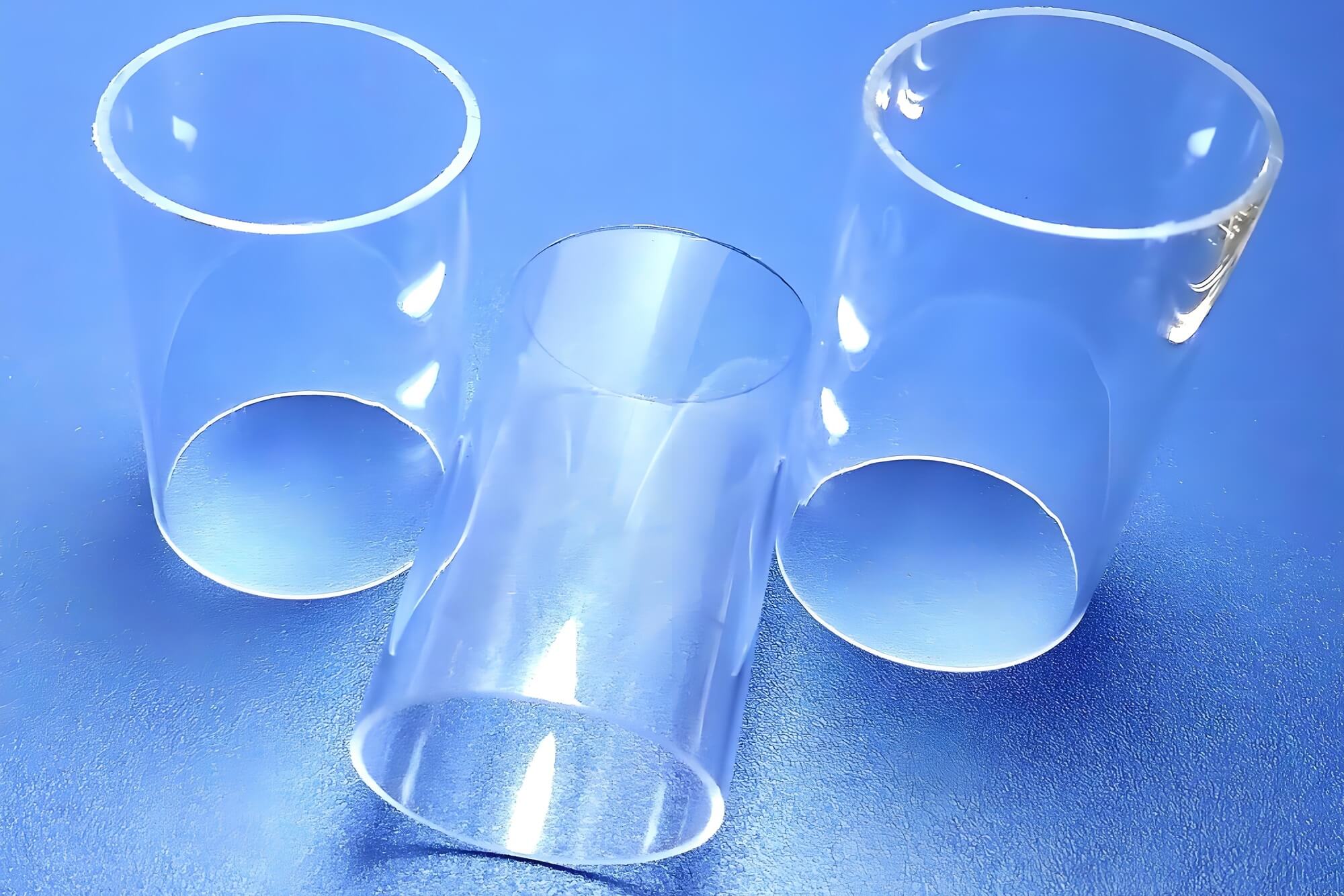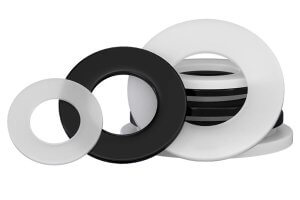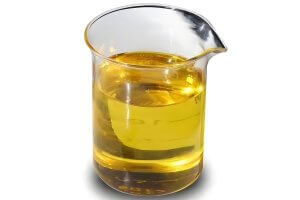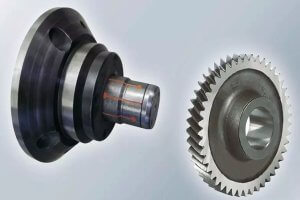Polyethylene Terephthalate Glycol, commonly known as PETG plastic, has solidified its position as a premier engineering thermoplastic due to its unique blend of toughness, chemical resistance, and machinability. For engineers, designers, and machinists, PETG plastic offers a versatile alternative to traditional materials like acrylic (PMMA) and polycarbonate (PC) in CNC machining applications. This comprehensive guide delves into the material science of PETG plastic, provides a data-driven comparison with competing thermoplastics, and offers an in-depth handbook for achieving precision and quality in CNC fabrication. By exploring its properties, machining strategies, and real-world applications, this article equips professionals with the knowledge to leverage PETG plastic effectively.
A Material Profile of PETG Plastic for Engineering Applications
PETG plastic, a thermoplastic polyester, represents a significant advancement over its parent material, Polyethylene Terephthalate (PET). The key to its enhanced properties lies in the incorporation of glycol during polymerization, which fundamentally alters the polymer’s molecular structure. This modification creates an amorphous, non-crystallizing material that delivers exceptional clarity, ductility, and formability, making PETG plastic a top choice for engineers across industries.
The Role of Glycol in PETG Plastic
The addition of glycol molecules disrupts the polymer chain’s ability to form a tightly packed crystalline structure, resulting in an amorphous matrix. This structural change is the cornerstone of PETG plastic’s manufacturing advantages. Unlike PET, which becomes cloudy and brittle when heated, PETG plastic maintains optical clarity and flexibility during thermoforming processes such as vacuum forming, pressure forming, and heat bending. Its lower forming temperature (typically 230–320°F or 110–160°C) compared to PET enhances its ease of fabrication, reducing energy costs and cycle times. This makes PETG plastic highly forgiving and adaptable for both prototyping and production.
Core Material Properties of PETG Plastic
PETG plastic boasts a well-rounded set of properties that cater to demanding engineering applications:
- Durability and Impact Resistance: PETG plastic exhibits superior toughness and ductility, with a notched Izod impact strength of 1.7 ft-lbs/in, significantly outperforming acrylic (0.4 ft-lbs/in). It resists cracking under mechanical stress, making it ideal for components subjected to impact or pressure.
- Chemical Resistance: PETG plastic offers excellent resistance to acids, bases, solvents, alcohols, and cleaning agents, ensuring reliability in chemically active environments like laboratories and industrial settings.
- Food-Grade Compliance and Safety: FDA-compliant grades of PETG plastic are widely used for food and beverage containers, medical packaging, and food processing equipment. Unlike some polycarbonates, PETG plastic is free of Bisphenol A (BPA), enhancing its safety for sensitive applications.
- Transparency and Aesthetics: With light transmittance of 88–90%, PETG plastic rivals acrylic’s clarity (92%) and can be colored for transparent or opaque finishes, offering design flexibility for aesthetic and functional parts.
- Recyclability and Sustainability: Identified by the resin code ♹, PETG plastic is fully recyclable, supporting eco-conscious engineering. While not biodegradable, its recyclability aligns with sustainable manufacturing practices.
- Thermal Stability: PETG plastic has a heat deflection temperature of 157°F (70°C) at 264 psi, suitable for moderate-temperature applications but less robust than polycarbonate (270°F).
These properties make PETG plastic a versatile material for industries ranging from medical and food processing to retail and electronics.
The CNC Machinability of PETG Plastic
PETG plastic is renowned for its thermoformability and popularity in 3D printing, but its machinability in CNC processes like milling, routing, drilling, and turning is equally impressive. Its balanced properties ensure precision, reliability, and high-quality surface finishes, making PETG plastic a preferred choice for functional parts.
Why CNC Machining Excels for PETG Plastic
CNC machining PETG plastic offers distinct advantages over additive manufacturing methods like 3D printing:
- Dimensional Accuracy: CNC machining achieves tolerances as tight as ±0.125 mm, far surpassing the ±0.500 mm typical of FDM 3D printing. This precision is critical for parts in complex assemblies, such as machine components or medical devices.
- Isotropic Properties: Unlike 3D-printed PETG plastic, which exhibits anisotropic weakness between layers, CNC-machined PETG plastic delivers uniform strength in all directions, ensuring mechanical reliability under diverse loads.
- Surface Finish: CNC machining produces smooth, layer-free surfaces, ideal for aesthetic and functional applications. In contrast, 3D-printed PETG plastic often requires post-processing to achieve comparable finishes.
- Production Scalability: While 3D printing PETG plastic excels for rapid prototyping and complex geometries, CNC machining is better suited for high-fidelity prototypes and production runs requiring consistent quality and durability.
For engineers transitioning from prototyping to production, CNC machining PETG plastic unlocks its full mechanical potential, delivering parts that meet stringent performance and aesthetic requirements.
Strategic Workflow Integration
The choice between 3D printing and CNC machining PETG plastic depends on the product development lifecycle. 3D printing is ideal for rapid ideation, allowing engineers to validate form and fit at low cost. Once designs are finalized, CNC machining PETG plastic ensures precision and reliability for functional prototypes and end-use parts. This complementary approach maximizes efficiency and performance across development stages.

Material Selection Showdown: PETG Plastic vs. Acrylic vs. Polycarbonate
Selecting the optimal transparent thermoplastic requires balancing impact strength, optical clarity, thermal performance, chemical resistance, and cost. PETG plastic positions itself as a “Polycarbonate-Lite” and an “Acrylic-Plus,” offering a cost-effective, durable alternative for applications where extreme toughness or optical perfection is not critical.
Table 1: Comparative Properties of Transparent Thermoplastics for CNC Machining
| Property | Acrylic (PMMA) | PETG Plastic | Polycarbonate (PC) |
| Tensile Strength (psi) | ~10,000 | ~7,700 | ~9,500 |
| Flexural Modulus (psi) | ~450,000 | ~310,000 | ~345,000 |
| Notched Izod Impact (ft-lbs/in) | 0.4 | 1.7 | 12.0–16.0 |
| Heat Deflection Temp. (°F) | ~190 | ~157 | ~270 |
| Light Transmittance (%) | ~92 | ~88–90 | ~88 |
| UV Resistance | Excellent | Poor (UV grades available) | Poor (Requires Coating) |
| Chemical Resistance | Fair | Excellent | Good (Vulnerable to Oils) |
| Relative Cost | Low | Medium | High |
Alt Text: Comparison table of PETG plastic, acrylic, and polycarbonate properties for CNC machining applications.
Key Comparison Points
Impact Strength: Polycarbonate leads with exceptional toughness (12.0–16.0 ft-lbs/in), but PETG plastic’s 1.7 ft-lbs/in significantly outperforms acrylic’s 0.4 ft-lbs/in, making it suitable for durable parts like machine guards.
Machinability: PETG plastic cuts cleanly without acrylic’s chipping or polycarbonate’s heat management challenges, simplifying CNC processes.
Optical Clarity and Scratch Resistance: Acrylic offers superior clarity (92%) and a harder surface, ideal for lenses and displays. PETG plastic’s clarity (88–90%) is nearly comparable but is softer and more prone to scratching.
Thermal Performance: Polycarbonate withstands higher temperatures (~270°F), while PETG plastic is limited to ~157°F, restricting its use in high-heat environments.
UV Resistance: Standard PETG plastic and polycarbonate have poor UV resistance, requiring stabilized grades or coatings for outdoor applications. Acrylic excels in UV stability.
Cost-Effectiveness: PETG plastic balances performance and cost, making it a practical choice for applications not requiring polycarbonate’s extreme toughness or acrylic’s optical perfection.
The Machinist’s Handbook: Best Practices for CNC Machining PETG Plastic
Successful CNC machining of PETG plastic requires a systematic approach to heat management, as frictional heat can cause melting. Efficient chip formation and evacuation are critical to achieving high-quality results.
Tooling Selection
The right cutting tool is paramount for machining PETG plastic:
- O-Flute End Mills: Solid carbide single or double O-flute tools are optimal for PETG plastic. Their polished surfaces and open flute geometry maximize chip evacuation, preventing heat buildup and melting. These tools ensure clean cuts and smooth finishes.
- Tools to Avoid: Multi-flute (3+ flutes) tools designed for metals or V-flute/Z-flute tools are unsuitable for PETG plastic. They restrict chip flow, leading to melting, poor surface quality, and potential cracking.
Feeds, Speeds, and Cutting Strategy
Optimizing feeds and speeds for PETG plastic ensures consistent chip loads and minimizes heat generation. Key strategies include:
- Ramping Entry: Use ramping or helical toolpaths to enter PETG plastic, avoiding direct plunging, which generates excessive heat and stress.
- Cornering: Program looping or rolling motions at corners to prevent tool dwelling, which causes localized melting in PETG plastic.
- Depth of Cut: For thin PETG plastic sheets, a single full-depth pass ensures the best edge finish. For thicker stock, use multiple shallow step-downs (10–50% of tool diameter).
- Cooling: While PETG plastic can be machined dry with proper tooling, a compressed air blast directed at the tool clears chips and provides convective cooling, eliminating the need for liquid coolants and simplifying cleanup.
Table 2: Recommended Starting Parameters for CNC Milling PETG Plastic
| Parameter | Roughing Pass | Finishing Pass |
| Tool Type | 1 or 2 Flute O-Flute Carbide | 1 or 2 Flute O-Flute Carbide |
| Spindle Speed (RPM) | 15,000–20,000 | 18,000–22,000 |
| Feed Rate (IPM) | 150–300 | 100–250 |
| Chip Load (per tooth) | 0.004″–0.008″ | 0.002″–0.005″ |
| Axial Depth of Cut (DOC) | 50%–100% of tool diameter | 10%–50% of tool diameter |
| Coolant Strategy | Compressed Air Blast | Compressed Air Blast |
Alt Text: Recommended CNC milling parameters for roughing and finishing PETG plastic sheets.
Workholding Considerations
PETG plastic sheets are flexible and prone to vibration during high-speed machining. Secure fixturing is essential:
- Vacuum Tables: Ideal for holding PETG plastic sheets flat, minimizing flutter.
- Clamping: Use ample, evenly distributed clamps for smaller workpieces to prevent movement.
- Soft Jaws: For delicate parts, soft jaws or padded fixtures prevent surface marring on PETG plastic.
Troubleshooting Common Issues
Melting or Gumming: Indicates excessive heat. Increase feed rate, reduce spindle speed, or improve chip evacuation with compressed air.
Poor Surface Finish: Often caused by inadequate chip load or dull tools. Adjust feeds/speeds or replace worn O-flute tools.
Cracking: Rare in PETG plastic but can occur with improper toolpaths (e.g., direct plunging). Use ramping entries and ensure secure fixturing.
Applications of CNC-Machined PETG Plastic
The unique properties of PETG plastic enable its use across diverse industries, particularly where clarity, toughness, and chemical resistance are critical.
Industrial and Manufacturing
PETG plastic is widely used for machine guards and protective screens due to its impact resistance (1.7 ft-lbs/in) and clarity (88–90% light transmittance). Unlike acrylic, which shatters under impact, PETG plastic withstands bumps and drops, making it ideal for industrial environments. In food processing, FDA-compliant PETG plastic is machined into chutes, guards, and components, leveraging its chemical resistance and low moisture absorption.
Case Study: A food processing plant replaced acrylic guards with CNC-machined PETG plastic guards for a bottling line. The PETG plastic components resisted cleaning agents and impacts from stray bottles, reducing maintenance costs by 30% over two years.
Medical and Healthcare
PETG plastic’s biocompatibility and sterilizability (via gamma radiation or ethylene oxide) make it a staple in medical applications. It is machined into transparent “check sockets” for orthotics and prosthetics, allowing clinicians to assess fit. PETG plastic is also used for surgical trays, instrument caddies, and medical device packaging due to its clarity and chemical stability.
Case Study: A medical device manufacturer used CNC-machined PETG plastic to create custom packaging for surgical implants. The material’s clarity allowed for visual inspection, while its toughness ensured protection during transport, reducing packaging failures by 25%.
Retail and Commercial
In retail, PETG plastic is machined into durable point-of-purchase (POP) displays, sign holders, and shelving. Its impact resistance prevents cracking in high-traffic environments, and its clarity enhances product visibility. PETG plastic is also ideal for functional prototypes that require realistic mechanical testing.
Electronics
PETG plastic’s dielectric properties and toughness make it suitable for machined insulators, mounting brackets, and enclosures in electronic devices. Its ease of machining allows for precise features like threaded holes and slots.Table 3: Industry Applications of CNC-Machined PETG Plastic
| Industry | Application Examples | Key Benefits of PETG Plastic |
| Industrial | Machine guards, chutes, protective screens | Impact resistance, clarity, chemical resistance |
| Medical | Check sockets, surgical trays, packaging | Biocompatibility, sterilizability, clarity |
| Retail | POP displays, sign holders, shelving | Durability, aesthetic clarity, cost-effectiveness |
| Electronics | Insulators, brackets, enclosures | Dielectric properties, machinability |
Alt Text: Table of PETG plastic applications across industries, highlighting key benefits.

The Future of Fabrication: Hybrid Manufacturing with PETG Plastic
Hybrid manufacturing, combining additive (3D printing) and subtractive (CNC machining) processes, is transforming production workflows. PETG plastic is uniquely suited for this paradigm due to its compatibility with both methods.
The Hybrid Workflow
- 3D Printing: PETG plastic’s excellent layer adhesion and low warping make it a top FDM filament for printing complex near-net shapes.
- CNC Post-Processing: CNC machining PETG plastic refines printed parts to achieve tight tolerances (±0.125 mm) and smooth, layer-free finishes.
This workflow enables the creation of complex, high-precision components that would be cost-prohibitive or impossible with a single process. For example, a 3D-printed PETG plastic part with intricate internal geometries can be CNC-machined to add precise mounting holes or polished surfaces, combining geometric freedom with mechanical reliability.
Advantages of PETG Plastic in Hybrid Manufacturing
Material Consistency: PETG plastic’s uniform properties ensure predictable performance across additive and subtractive processes.
Cost Efficiency: Printing near-net shapes reduces material waste, while CNC machining PETG plastic ensures precision without expensive tooling.
Versatility: PETG plastic supports rapid prototyping and small-batch production, ideal for iterative design cycles.
As hybrid manufacturing matures, PETG plastic’s dual-process compatibility positions it as a material of choice for next-generation fabrication.
Optimizing PETG Plastic for CNC Machining: Advanced Considerations
To further enhance CNC machining outcomes, engineers can adopt advanced strategies tailored to PETG plastic:
Toolpath Optimization
Adaptive Clearing: Use adaptive toolpaths to maintain consistent chip loads, reducing heat and improving tool life when machining PETG plastic.
Trochoidal Milling: For deep pockets or slots in PETG plastic, trochoidal toolpaths minimize tool engagement, preventing melting and ensuring clean cuts.
Simulation: Use CAM software to simulate toolpaths, identifying potential issues like excessive heat or vibration before machining PETG plastic.
Material-Specific Considerations
Annealing: For high-precision parts, annealing PETG plastic before machining can relieve internal stresses, reducing the risk of warping during cutting.
UV-Stabilized Grades: For outdoor applications, select UV-stabilized PETG plastic to ensure longevity without compromising machinability.
Thickness Selection: PETG plastic sheets range from 0.5 mm to 25 mm. Thicker sheets (>10 mm) may require multi-pass strategies to manage heat.
Quality Control
Inspection: Use CMM (Coordinate Measuring Machines) or laser scanners to verify tolerances on CNC-machined PETG plastic parts, ensuring compliance with specifications.
Surface Finish Testing: Employ profilometers to measure surface roughness, ensuring PETG plastic parts meet aesthetic and functional requirements.
Environmental and Economic Benefits of PETG Plastic
PETG plastic’s recyclability (♹) aligns with sustainable manufacturing goals. It can be reprocessed into new products, reducing waste and raw material costs. Economically, PETG plastic’s medium cost—higher than acrylic but lower than polycarbonate—makes it an attractive option for high-volume production. Its ease of machining reduces cycle times and tool wear, further lowering fabrication costs.
Sustainability in Practice
Recycling Programs: Many manufacturers offer take-back programs for PETG plastic scrap, which can be pelletized and reused.
Energy Efficiency: PETG plastic’s low forming temperature and machinability reduce energy consumption compared to polycarbonate.
Conclusion
PETG plastic is a high-performance engineering material that excels in CNC machining applications. Its toughness, chemical resistance, clarity, and recyclability make it a versatile choice for industries ranging from industrial manufacturing to medical and retail. By adhering to best practices—using O-flute tools, optimizing feeds and speeds, and ensuring secure fixturing—engineers can achieve precise, durable components with PETG plastic. Its compatibility with hybrid manufacturing further enhances its value, enabling complex, high-precision parts that combine the strengths of 3D printing and CNC machining. As a cost-effective, sustainable, and machinable thermoplastic, PETG plastic is poised to drive innovation in engineering and fabrication.
FAQ:
- What makes PETG plastic a good choice for CNC machining?
PETG plastic is favored for CNC machining due to its balanced properties: high impact resistance (1.7 ft-lbs/in), excellent chemical resistance, and ease of machining. It cuts cleanly without chipping, unlike acrylic, and requires less heat management than polycarbonate. Its dimensional stability allows for tight tolerances (±0.125 mm), making PETG plastic ideal for precision parts in industries like medical, industrial, and retail.
- How does PETG plastic compare to acrylic and polycarbonate for CNC machining?
PETG plastic offers a middle ground between acrylic and polycarbonate:
- Vs. Acrylic (PMMA): PETG plastic is tougher (1.7 vs. 0.4 ft-lbs/in impact strength) and more chemically resistant, but slightly less clear (88–90% vs. 92% light transmittance) and more prone to scratching.
- Vs. Polycarbonate (PC): PETG plastic is less impact-resistant (1.7 vs. 12.0–16.0 ft-lbs/in) but more cost-effective and easier to machine, with better chemical resistance to oils and solvents.
- UV Resistance: Standard PETG plastic has poor UV resistance, but UV-stabilized grades are available, unlike acrylic’s inherent UV stability.
See Table 1 in the main article for a detailed comparison.
- What are the best tools for CNC machining PETG plastic?
Solid carbide single or double O-flute end mills are the optimal choice for PETG plastic. Their polished surfaces and open flute geometry ensure efficient chip evacuation, preventing melting and ensuring smooth finishes. Avoid multi-flute tools designed for metals, as they cause heat buildup and poor surface quality in PETG plastic.
- What feeds and speeds should I use for CNC machining PETG plastic?
Recommended starting parameters for milling PETG plastic include:
- Spindle Speed: 15,000–20,000 RPM (roughing), 18,000–22,000 RPM (finishing).
- Feed Rate: 150–300 IPM (roughing), 100–250 IPM (finishing).
- Chip Load: 0.004″–0.008″ per tooth (roughing), 0.002″–0.005″ per tooth (finishing).
- Depth of Cut: 50–100% of tool diameter (roughing), 10–50% (finishing). Use a compressed air blast for cooling and chip removal. Adjust based on chip formation and surface finish. See Table 2 in the main article for details.
- Can PETG plastic be used for outdoor applications?
Standard PETG plastic has poor UV resistance, leading to yellowing or degradation in prolonged sunlight exposure. However, UV-stabilized grades of PETG plastic are available and suitable for outdoor applications like signage or protective covers. Always specify UV-resistant PETG plastic for such projects.
- Is PETG plastic food-safe for CNC-machined parts?
Yes, FDA-compliant grades of PETG plastic are food-safe and widely used for food containers, beverage bottles, and food processing equipment components. Unlike some polycarbonates, PETG plastic is free of Bisphenol A (BPA), enhancing its safety for food-contact applications.
- How does CNC machining PETG plastic compare to 3D printing it?
CNC machining PETG plastic offers superior dimensional accuracy (±0.125 mm vs. ±0.500 mm for 3D printing) and isotropic strength, making it ideal for functional parts. 3D printing PETG plastic excels for rapid prototyping and complex geometries but produces anisotropic parts weaker between layers. CNC machining is preferred for high-fidelity prototypes and production runs, while 3D printing suits early-stage design validation.
Reference:
https://en.wikipedia.org/wiki/Polyethylene_terephthalate
https://www.sciencedirect.com/topics/earth-and-planetary-sciences/polyethylene-terephthalate
https://www.wikiwand.com/en/articles/Polyethylene_terephthalate
https://www.sciencedirect.com/science/article/pii/S2666138123000592
Other Articles You Might Enjoy
- CNC Machining of Polymers: A Comparative Analysis of Thermoplastic vs. Thermoset
In CNC machining, selecting the right polymer for precision components is a pivotal decision that defines performance, durability, and manufacturability. The choice between Thermoplastic vs. Thermoset is especially critical, as…
- The Intersection of Advanced Polymers and Digital Manufacturing: A Deep Dive into CNC-Machined Plastic Grommets
In the complex landscape of modern engineering, plastic grommets are indispensable components that ensure the reliability, safety, and longevity of systems across industries such as aerospace, automotive, medical devices, electronics,…
- Avoid Melting and Delamination When Machining Plastic Laminate
Introduction Plastic laminate is a beautiful material when it’s done right—and a real nightmare when it isn’t. I’ve been working with CNC machines for years, and if there’s one thing…
- A Popular Science Guide to Plastic Materials
Plastics are among the most essential materials in modern manufacturing, with applications across various industries such as automotive, electronics, medical, packaging, and construction. These materials can be molded and processed…
- Detailed Overview of Injection Molding and Plastic Manufacturing Processes
Plastic manufacturing involves the process of converting plastic raw materials into final products through various techniques. These techniques range from simple cutting and shaping to more complex processes like injection…






